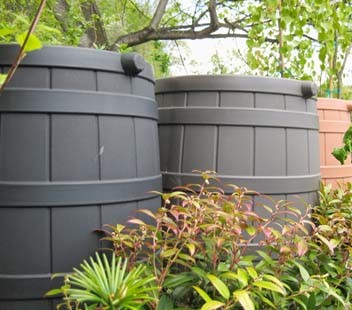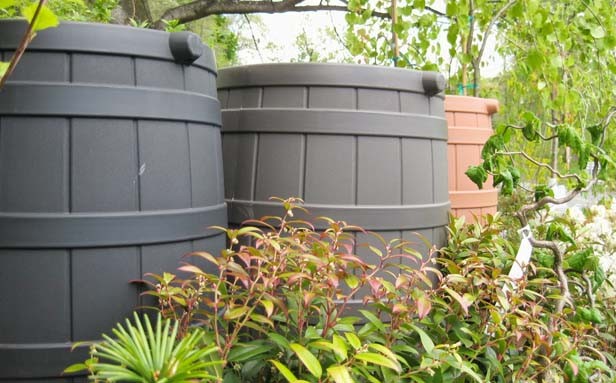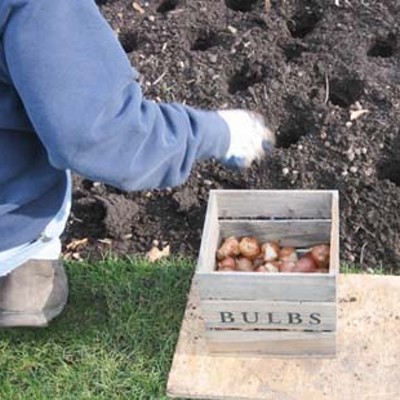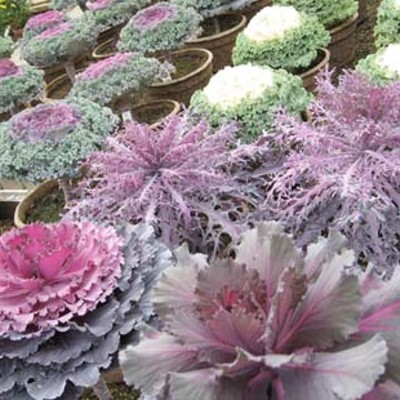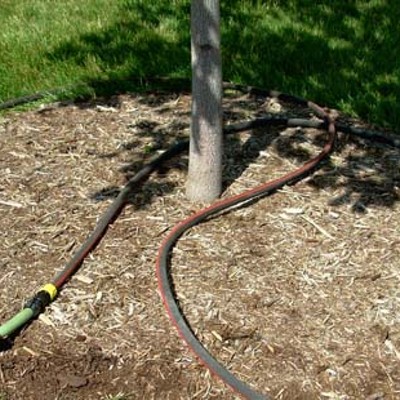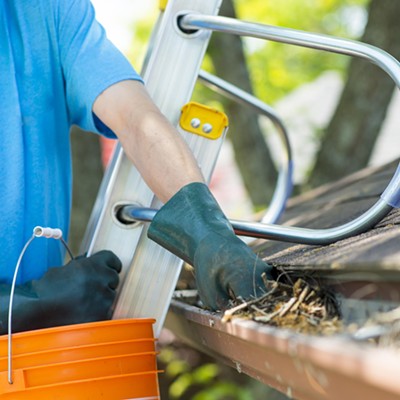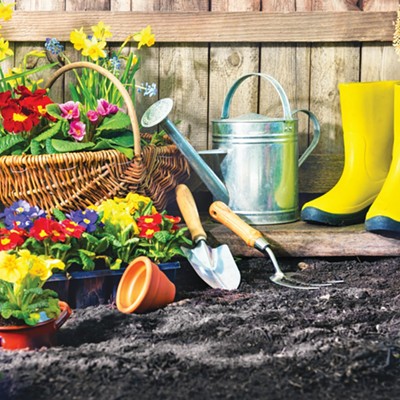According to the United States Environmental Protection Agency, lawn and garden watering makes up nearly 40 percent of total household water use during the summer.
One way to reduce outdoor water usage and conserve water is to collect rainwater. A rain barrel is a system that collects and stores rainwater. A typical half-inch rainfall will fill a 55-gallon barrel. It is estimated that a 55-gallon rain barrel can save about 1,300 gallons of water during the summer.
Outdoor uses for collected rainwater include washing vehicles or watering flowers and lawns. Rainwater is a favorable source of water for plants because it doesn’t contain chlorine or salts. Water collected in rain barrels should not be used for drinking water for humans or animals. In addition, there are conflicting reports whether or not rainwater collected from roofs is safe for vegetable crops. The water may have contaminants such as leaves, dust, bird droppings and other airborne materials.
A roof is the most common area to use for rainwater collection. Rainwater can be collected from most roof systems except for roofs made of old tar and gravel, old asbestos shingles or treated cedar shakes. Place rain barrels at current downspouts. This will require modification of the downspouts. If the building doesn’t have gutters, place the barrel directly under an area of the roof that sheds a lot of water.
Home gardeners can purchase several styles of ready-made rain barrels. Look for a good quality plastic barrel with tight-fitting parts, screens over any open areas and an overflow. Metal spigots (sillcocks) will last longer than plastic. Openings larger than 1/16 inch can be entry points for mosquitoes. An overflow pipe will carry excess water to another barrel or away from the building structure.
There are many patterns for do-it-yourself rain barrels. If you make your own, be sure to use food-grade barrels and avoid containers that were used for harsh chemicals.
Elevate the rain barrel by placing it on top of concrete cinder blocks or on a platform. This will provide clearance for connecting a hose or filling a watering can and provide additional water pressure. To avoid the possibility of the barrel tipping over, make sure that the platform or blocks are level. When full, a 50-gallon barrel can weigh more than 400 pounds. Keep children and animals away from rain barrels.
To use the water in the barrel, attach a garden hose or soaker hose to the spigot, or drain water into a bucket or watering can.
Barrels need minimal maintenance. Periodically clean screens, make sure all parts are tight-fitting and inspect for cracks. White or light-colored barrels are more prone to cracking and algae growth. In late fall, drain and rinse barrels and store them upside down with the spigot valve open. Rain barrels are an environmentally friendly, easy way to conserve water and supplement outdoor water usage.
For more details on how to construct and use a rain barrel visit “Rain Barrels, A Homeowners Guide,” at www.protectingourwater.org/watersheds/get_wet/protectwater/
rainbarrels/ .
City Water, Light and Power water customers are eligible for a $25 rebate for purchasing and installing a rain barrel that holds 50 gallons or more. For more information visit their website at www.cwlp.com or call 217-789-2070.
Jennifer Fishburn is horticulture educator with University of Illinois Extension, Logan-Menard-Sangamon Unit.

